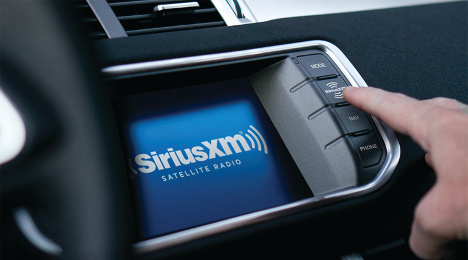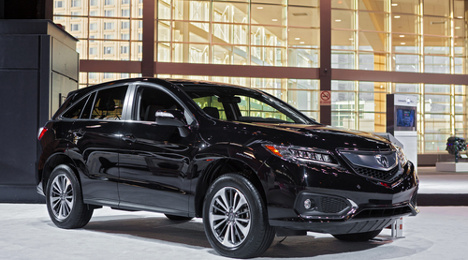If your dealership has a potential buyer looking for a vehicle for a teenage driver, there’s a good chance one of the 49 “best choices” or one of the 82 “good choices” selected by the Insurance Institute for Highway Safety (IIHS) is likely in your inventory.
There are 131 models on these lists even though the federal agency said it applied more stringent criteria to its list of recommended used vehicles for teens.
IIHS shared its latest update on Wednesday, including those 49 “best choices” that have a cost starting below $20,000, and 82 “good choices” that have a cost starting below $10,000. The agency highlighted recent safety improvements have percolated down to lower-cost used cars, SUVs, minivans and pickups.
Federal officials acknowledged teenagers are among the riskiest drivers, but they often end up with inexpensive vehicles that don’t offer adequate protection in a crash. To help families find safer vehicles that fit within their budgets, IIHS began publishing a list of recommended used vehicles for teens in 2014.
For the first time this year, small overlap front crash protection has been factored in for the best choices section of the list. And the bar has been raised for the less expensive good choices as well, with better side and head restraint ratings required.
“Just as we are always updating the criteria for our awards for new vehicles, Top Safety Pick and Top Safety Pick+, we can now point used vehicle buyers toward even safer models than before,” said David Zuby, IIHS executive vice president and chief research officer.
“Good crash protection is more affordable than ever, so there’s no need to skimp on safety when it comes to a vehicle for a young driver,” Zuby continued.
Prices for listed vehicles are provided by Kelley Blue Book, based on estimates for a private-party purchase near the Institute’s Arlington, Va., headquarters.
“Choosing a safe vehicle for your teen is of paramount importance, and settling on a vehicle your family can afford is also very important,” said Jack Nerad, executive editorial director and executive market analyst for Kelley Blue Book.
IIHS listed a few basic principles that the agency said should always be taken into account when shopping for a vehicle for a teenager; a rundown that could help dealerships guide their customers toward the vehicle that fits them best:
—High horsepower and young drivers don't mix. Teens may be tempted to test the limits of a powerful engine. Vehicles that come only with powerful engines have been left off the lists, but some recommended models have high-horsepower versions. Stick with the base engine.
—Bigger, heavier vehicles are safer. There are no minicars or small cars on the lists. Small SUVs are OK; they weigh about the same as a midsize car.
—Electronic stability control is an essential feature. This technology, which cuts single-vehicle fatal crash risk nearly in half, has been required on new vehicles since the 2012 model year. It helps a driver maintain control on curves and slippery roads. All listed vehicles have the feature standard.
“Beyond those basics, parents should seek out a vehicle with the highest crash test ratings they can afford,” IIHS said.
“Models on this year’s good choices list earn good ratings in the Institute’s moderate overlap front, side and head restraint tests,” the agency continued. “Vehicles on the best choices list must also have a good rating for roof strength to protect in rollover crashes and a good or acceptable rating in the small overlap test, which replicates what happens when the front, driver-side corner of a vehicle strikes another vehicle or an object such as a tree or utility pole.
If rated by the National Highway Traffic Safety Administration (NHTSA), vehicles on either list must earn 4 or 5 stars overall or 4 or 5 stars in the front and side tests under NHTSA's old rating scheme, which was used through the 2010 model year.
All of the vehicles highlighted by IIHS can be found here.
SiriusXM announced on Tuesday that dealer group Rightway Automotive signed on to its Pre-Owned Program, which provides a three-month subscription to the radio company’s All Access package.
Any of the group’s customers who purchase a pre-owned vehicle with a factory-equipped satellite radio can use the service.
“Rightway is a welcome addition as we continue to grow the SiriusXM Pre-Owned Program, which now features the participation of more than 25,000 auto dealers across the country,” Gail Berger, SiriusXM vice president of auto aemarketing said in a news release.
“The SiriusXM All Access package is our most comprehensive programming offering. It adds value to Rightway’s large satellite radio equipped pre-owned vehicle inventory, and allows us to reach many potential new subscribers by giving them access to our world class content both in and out of the vehicle.”
The package includes talk programming, live professional and college sports coverage, commercial-free music, comedy and various exclusive online-only channels.
Programming is also accessible outside the vehicle on the SiriusXM app and online at siriusxm.com.
“Rightway is excited to work with SiriusXM to provide additional value for our customers,” Rightway operations director Chase Dicken said. “SiriusXM offers an unparalleled lineup of music, entertainment and sports programming, and Rightway customers can now drive off our lots with it all at their fingertips.”
Additionally, Rightway customers who purchase any vehicle equipped with SiriusXM’s Infotainment services will have three months of access to the in-vehicle information, which features traffic and weather data, fuel prices and more, according to SiriusXM.
Rightway currently operates more than two dozen dealerships located in Michigan, Illinois, Ohio and Georgia.
For additional information about the Pre-Owned Program, visit www.siriusxmdealerprograms.com.
Autotrader’s list of the top certified pre-owned deals available this April names luxury brands only; the car shopping site’s picks for the month suggests that it is an ideal time for those interested in a CPO luxury vehicle to shop.
"Saving money is key for car shoppers and buying a CPO vehicle ensures you're not burdening yourself with any major system issues or major defects," Autotrader executive editor Brian Moody said in a news release. "If buying a used car leaves you anxious, consider buying a certified pre-owned vehicle, which includes a manufacturer-backed warranty for additional peace of mind."
The follwing is Autotrader editors' list of top CPO program deals offered this month.
Acura
This April, Acura offers powertrain coverage for up to seven years or 100,000 miles from the original sale date as well as an added year of bumper-to-bumper protection. Autotrader said qualified shoppers interested in the brand’s MDX specifically can get a great deal on the model as well as buy CPO versions of the crossover with interest as low as 1.9 percent for up to 36 months.
Audi
Audi's CPO program is offering qualified buyers up to $1,000 cash back on select A8 models through the end of the month. The brand is also throwing in comprehensive coverage for up to six years or 100,000 miles from a vehicle's original sale date.
BMW
BMW currently offers shoppers up to six years or 100,000 miles of bumper-to-bumper coverage for most of its CPO vehicles. The BMW i3 is a plug-in electric car or hybrid is among them. “The best deal is for qualified shoppers looking to finance a certified pre-owned i3, as BMW is touting 0.9 percent interest for up to 36 months — an unusually low rate for the automaker,” Autotrader said.
Cadillac
This month, Cadillac offers terms such as a comprehensive, bumper-to-bumper warranty, which cover vehicles for up to six years or 100,000 miles from the original sale date. The brand is also offering qualified buyers 2.9-percent interest for up to 60 months on all SRX models. Autotrader said this is “a great deal for any used vehicle, and especially one with a long, manufacturer-backed warranty.”
Jaguar
Jaguar shoppers can obtain bumper-to-bumper coverage for seven years or 100,000 miles from the original sale date. This month, Jaguar is also offering its qualified customers 0.9-percent interest on all XF models for up to 24 months or and up to 60 months for CPO buyers who chose a 2014 or 2015 XF.
“Spring is finally upon us, and so are some great deals from leading auto manufacturers,” Autotrader said. “For car buyers, this is a good time to start searching for great prices on gently used, budget-friendly vehicles.”
Click here for additional information on the April CPO deals selected by Autotrader editors.
Car and Driver is now giving auto dealers the opportunity to place their inventory listings in front of an estimated 12 million-plus monthly online visitors through its website’s new inventory listings product that matches its online content and vehicle search capabilities with a dealer’s inventory.
“This product marks the beginning of Car and Driver’s evolution from an enthusiast-focused news and reviews website to a complete decision-making resource for in-market auto shoppers,” the automotive content brand’s partner, Jumpstart Automotive Media, said in a news release.
The new listings product not only gives dealers a platform to share listings on Car and Driver’s site that yields more than 12 million unique monthly visitors, but it also allows dealers to own all messaging, ads, and links on their vehicle detail pages.
“In turning ourselves into a true service for car shoppers and enthusiasts, we become a connection point between the consumer’s automotive curiosity/desire and the car itself,” Car and Driver editor-in-chief Eddie Alterman said. “While the function of our site is changing, our mission remains the same: to deliver the most useful, honest, and entertaining information about cars.”
Car and Driver’s new offerings are exclusive to the brand’s website and will be sold through Jumpstart’s dealer sales team, according to the marketing and advertising solutions company.
“Taking a mobile-first approach, we have completely re-architected the website. We’ve also doubled our editorial staff and increased the scope of topics to cover more of today’s trending topics such as technology and environment,” Josh Searcy, Car and Driver chief product officer said.
“Car and Driver’s evolution is in response to the disruption in the online auto marketplace; it’s about accommodating the ways people actually want to shop for cars online. We’re incredibly excited about how far we’ve come and what’s still yet to come in making the auto shopping experience more complete for our audience.”
Additionally, according to Searcy, alongside the suite of auto shopper tools now available — such as pricing and inventory — Car and Driver is currently developing a new buyer’s guide section that provides 9 in-depth categories for each make and model, as well as reviews.
In-car Internet service provider Autonet Mobile recently improved the inventory monitoring capabilities of Dealer Connect, its year-old connected car technology platform built to support fleet and dealership operations, the company announced on Monday.
Dealer Connect’s new updates allow dealership and fleet management to now view all of their connected vehicles on a single map, track mileage in real-time and see driver behaviors, which include acceleration and braking habits.
“One of the many facets that dealers and consumers love about Dealer Connect is vehicle monitoring,” Autonet Mobile chief executive officer Greg O’Neill said. “In addition to service and sales opportunities for dealers, car owners who subscribe to Autonet Mobile will find it much easier to keep their cars in good running condition and track how their vehicles are driven.”
A total of three new Autonet Mobile Lot Tracker reports containing current inventory information is now available. Additionally, “consumers who choose to subscribe to Autonet Mobile in the F&I booth can immediately benefit from enhanced monitoring of their connected vehicles,” the company said.
The connected car technology can deliver the current location, vehicle speeds and driver habits of all of their connected cars. For example, it can alert parents if any of their vehicles cross any preset geozones and curfews that can be set by owners.
Autonet Mobile collects data via an easy-to-install OBD-II device that uses a companion app available on Apple’s App Store and Google Play.
“It offers a simple interface to learn about vehicle issues and schedule service at participating dealerships,” the company said. “[An] automated service appointment feature also offers the potential for increased service retention by allowing dealers to send notifications for deals, service reminders and recalls.”
Autonet Mobile launched the Dealer Connect platform in April last year.
Cox Automotive announced that on Monday, the company will launch Flash Forum, a new complimentary educational webinar series created to instruct dealers on how to improve results and successfully grow their wholesale and retail operations.
Cox Automotive’s client education services team and subject-matter experts from the company’s various brands will host the 30-minute webinars.
The virtual education program’s content will cover topics such as sales, marketing, service and inventory as well as customer handling, consumer behavior, inventory acquisition, operations and digital retailing, according to Cox.
Dealers interested in the program can view event details and register via the Cox Automotive Flash Forum event calendar here.
Flash Forum’s upcoming webinar event dates and topics include:
Advertising That Works!
o Monday, April 10 9 – 9:30 a.m. ET
o Monday, April 10 1 – 1:30 p.m. ET
o Friday, April 14 11 – 11:30 a.m. ET
Level the Playing Field: Independent Dealer Case Study on Online Marketing
o Monday, May 8 9 – 9:30 a.m. ET
o Monday, May 8 1 – 1:30 p.m. ET
o Friday, May 12 11 – 11:30 a.m. ET
Break the Chains Binding Your Supply Chain: 6 Ways to Speed Up the Wholesale Process
o Monday, May 15 9 – 9:30 a.m. ET
o Monday, May 15 1 – 1:30 p.m. ET
o Friday, May 19 11 – 11:30 a.m. ET
Three fundamental reasons why auto dealerships find converting leads into buyers an obstacle are: inadequate explanation of the pricing and value proposition, lack of timely follow-up and not using leads' preferred follow-up communication methods, according to recent study results released by AutoLoop.
"To increase lead conversion rates, the studies' results shine a spotlight on three specific areas that auto dealers can target for sales process and technology improvements," the auto industry marketing and customer relationship management solutions provider said in a news release.
AutoLoop's findings come from two of the company’s latest studies, the 2016 Digital Engagement (ADE) study, which analyzes the purchase behavior of more than 4 million customers who represent 1,000 dealerships within the U.S.; and the 2016 Autoloop XRM Unsold Customer Survey Results, which questioned 60,000 unsold customers following initial visit to a national sample of dealerships.
"Many dealers are quick to blame low conversion rates on the quality of leads, or they accept low conversion rates and opt to spend more money to get more leads, but our study points to different reasons for low conversion rates," said Doug Van Sach, AutoLoop’s vice president of analytics and data services. "The data tells us that key areas where dealers are failing to convert have to do with the internal sales process and the failure of sales teams to use technology and tools available to them."
1. Explain pricing and value proposition
"The reasons given to purchase and not to repurchase were similar, which tells us that it really is up to the individual salesperson to be transparent about pricing and to reinforce price points with additional benefits offered by the dealer, such as large vehicle inventory or free loaners during subsequent service visits," Van Sach said.
"Additionally, salespeople may want to ease up on the pressure and focus on making the purchasing process as pleasant and fast as possible."
AutoLoop said the car shoppers surveyed were asked why they decided to buy a vehicle from a particular dealership, their top reasons were: good value for the money, selection of vehicles, ease of purchase experience, quality of salespeople and convenient location.
When asked why they chose to not repurchase at a particular dealership, their top reasons were: prices are too high, plan on buying another brand, the dealer is too far from home, too much pressure to buy and paperwork took too long.
2. Follow-up in a timely manner
Only 47 percent of car shoppers surveyed said they received follow-up communications from the dealership, and 53 percent responded that they never received a follow-up whatsoever.
AutoLoop suggests that this significantly influences purchase rate. The study found that 26 percent of customers who received follow-up communications chose to buy a vehicle from that dealership.
Just 15 percent of shoppers who did not receive follow-up communications returned to the dealership to make a purchase.
"These figures are shocking as everyone knows that follow-up is a basic tenet of the sales process," Van Sach said. "This tells us that many salespeople do not understand the real value of follow-up, are not being held accountable to the established processes within the dealership, or don’t have sufficient time available to contact every unsold customer."
3. Communicate via prospects' preferred methods
Whether it’s by email or phone call, AutoLoop said another compelling finding is that the way in which follow-up communications are preferred is closely tied to the generation a car shopper belongs to.
- Among baby boomers, 60 percent prefer a phone call and 40 percent prefer email.
- Gen Xers and millennials have a preference that’s split 50/50 between email and phone calls
"I believe just about every CRM has a place to track a preferred method of contact, or it's very easy to store the information in a customer’s profile. One strategy dealers can employ is to ask customers for their preferred method of contact during their initial interaction with a dealer either online or in the store," Van Sach said. "Dealers that focus on enhancing their sales process and usage of technology in these three areas will see significant improvements in their lead conversion rates."
The American International Automobile Dealers Association (AIADA), along with Cox Automotive, will host a free AutoTalk webinar on April 18 to discuss best practices for hiring and retaining dealership employees.
The upcoming talk will feature Nicole Ashe, Cox Automotive’s vice president of talent, diversity, and culture.
AIADA said Ashe would expound on the following list of topics.
- How to hire the best in class through recruitment and staffing
- How to employ a fast track to sales and service with an onboarding/new hire program
- Make it stick with dealership culture resulting in better retention and less turnover
- Grow from within through continuous development, cross-training, and leadership development
“Hiring is an elimination process, not an inclusion process,” AIADA said in a news release. “When dealers are disciplined about hiring it changes their dealership culture.”
A dealership with 55 employees, employee turnover cost can reach about $400,000 a year following search and training expenses and any lost sales and service business, according to AIADA.
The first edition of the webinar will be hosted on April 18 at 10 a.m. EST. To register, click here. To register for the second webinar at 4 p.m. EST, click here.
Following the first-quarter, the growing demand for light trucks over cars will continue to be noticeable, but this will likely be more of a quandary for creditors rather than dealers, says National Automobile Dealers Association chief economist Steven Szakaly.
“The falloff in those sedan prices and then the returns of those leases are much more of an issue for finance companies than they are actually for the retail body,” Szakaly said during a media conference call on Wednesday where he and NADA chairman Mark Scarpelli shared insights on the overall economy following the first quarter.
Sedans have lost about 12 percent market share so far this year, and trucks have gained a little above 7 percent, according to Szakaly.
“This is just a continuing story that we see consumers switching to the utility of crossover vehicles, sport-utilities and other light trucks — choosing those over the sedan segment,” he said. “The used-car business remains strong. Sedans are under pressure and clearly we’re seeing that sort of used-car pricing starting to certainly become more negative as a lot of these off-lease vehicles are coming in, but these are manageable issues I think for this industry.”
Szakaly predicts overall new-vehicle sales will total 17.1 million vehicles this year.
“We have economic growth that continues to be what we say is moderate. We are looking at growth here in the first quarter right around 2 percent, forecasting 2.1 percent — still below trend and still below what we’d like to see in terms of economic activity above 2 and a half or even closer to 2 percent,” he said. “What continues to be a net positive is employment, employment growth continues to be strong with plus 200,000 thousand jobs being created in January and February.”
Though the total number of U.S. jobs have seen an increase in recent weeks, wages themselves have remained stagnant and that has a significant impact on the used-car market in particular because consistently high wage earners tend to buy new, he explained.
“Slightly on the negative side, we’ve got this lack of wage growth overall and that continues to be one of the fundamental troubling factors," Szakaly said.
"With the economic growth that has continued here since 2009, wages have not been rising and they haven’t kept pace with some of the rise in prices.”
Despite a decrease in the purchase of sedans overall, customers who can afford their desire for small luxury vehicles are likely to make a purchase this year, according to a recent Jumpstart Automotive Media study that analyses consumers’ car shopping behavior, as well as what segments of vehicles are either gaining or losing traction.
Sedans within luxury-vehicle segment sales grew 7 percent from 2015 to 2016, and shopper interest for midsize and full-size luxury sedans rose over 10 percent, according to the study.
“As long as people are working they are going to be looking at buying new vehicles and used vehicles,” Szakaly said.
Four automakers posted new all-time highs for monthly certified pre-owned sales in March; a month where Autodata Corp. determined the industry turned the second-highest amount of CPO units ever.
And perhaps the industry will need other OEMs to join that performance level in order to keep up with the volume of off-lease vehicles hitting the wholesale market.
Autodata reported that four automakers — Fiat Chrysler, Kia, Maserati and Nissan — closed the first quarter with their highest CPO sales total ever for a single month. The firm indicated Fiat Chrysler turned 23,266 certified units as Nissan moved 18,509 CPO models. Kia recorded 7,513 certified sales as Maserati turned 79 CPO models.
In fact, Autodata mentioned to Auto Remarketing that Fiat Chrysler’s CPO sales total compiled during the first quarter also set an all-time high for the OEM, as its franchised dealers retailed 58,398 units.
All told, Autodata reported that dealers retailed 243,277 CPO units in March, off by just 0.3 percent year-over-year when the all-time sales record was established. That’s when the industry delivered 243,944 certified models.
The March figure also soared past the CPO sales total recorded during the previous month by 15 percent.
For the quarter, Autodata indicated the CPO sales figure came in at 647,373 units, edging 0.1 percent higher compared to the first quarter of last year. The amount also was 0.8 percent higher than the fourth quarter of 2016.
Analysts pointed out that there were 27 selling days in March of this year and last year as compared to just 24 in February of this year. The March sales figure computed into a daily selling rate was 9,010, according to Autodata.
Looking deeper at the March data on a year–over-year basis, analysts noticed that domestic brand share fell 1.8 percentage points to 35.4 percent, as European share increased 1.2 points to 16.3 percent. Autodata added the Asian share edged up 0.7 points to 48.3 percent.
No matter which brand has share, Edmunds senior analyst Ivan Drury explained to Auto Remarketing that it appears OEMs and their dealers are going to have to keep this record or near-record setting pace in order to keep off-lease units from sitting in inventory for too long.
“While we've seen a consistent rise in off-lease each year, it appears that CPO sales are not trending as closely with off-lease as once predicted,” Drury said. “This could be an indicator that we’ve begun to saturate the market.
“CPO, on an overall level, is utilized as a way to distinguish and show differentiation from the rest of the used market, but as we have waves of relatively new vehicles of similar trim levels and mileage, it could be less of a selling point and just seen as added cost when there are so many comparables,” he continued.
Kelley Blue Book managing editor Matt DeLorenzo also looked cautiously at the relationship between off-lease wholesale volume and CPO retail trends.
“The glut of off-lease vehicles needs to be managed carefully because these are the units that provide most of the CPO inventory, thanks to annual mileage caps that make these vehicles more desirable and easier to warranty than high-mileage units,” DeLorenzo said. “These CPO units really don’t prime new-vehicle sales other than being able to flip the current lessee into a new vehicle. That used unit as a CPO becomes an entry-level vehicle to a buyer who may not be able to afford a new model of a particular brand.
“If incentives become so heavy that those buyers are able to actually afford a new vehicle, then yes, there will be an impact,” he continued. “However, manufacturers have the opportunity to manage their off-lease volume by storing cars (that’s already happening) to keep inventories down and prices and margins up. Dealers are more than happy on this count because their margins are usually greater on CPO than new vehicles.”
And as DeLorenzo mentioned, the incentive moves automakers are using to turn new models could leave a rippling impact over to the used department trying to retail CPO units.
“There is no question that huge rebates will have an effect on the used-car market, and CPO vehicles will not be immune to those pressures,” DeLorenzo said. “That said, there’s more to the CPO proposition than just price. Some rebates may be on only the entry-level versions of a particular model or may be offered regionally. A buyer may still opt for a better equipped CPO car that could come in at or just under the price of an all-new car with less equipment. And that’s not to say that makers will be looking to re-lease their CPO cars at attractive rates (this is a small slice of the market, but it could grow) or offer other non-cash incentives and spiffs like extended warranties and subsidized financing to make the CPO deal compelling.
“Still, we are likely to see prices trending downward on both CPO and non-CPO vehicles over the next year as some 3.1 million vehicles are expected to return to the market off-lease,” he continued. “However, overall CPO volumes may remain fairly stable because as a marketing tool these programs are expanding, so the growth in CPO with manufacturers offering or expanding their programs will probably mitigate against a dramatic drop-off in CPO activity.”
Drury also touched on how consumers are weighing the option of purchasing a CPO unit versus a new model, especially one that might have a substantial amount of cash on the hood.
“Consumers who shop both new and used/CPO vehicles are research-intense and tend to spend much greater amounts of time gathering information and searching inventory than those who strictly shop new or used,” Drury said. “Some of this stems from simply having more options, but for a consumer looking to get the best bang for their buck comparing used, CPO and new is vital.
“That said, each consumer also has a number in their head at which point the price premium for a new vehicle over a used/CPO is justified,” Drury went on to say. “Factoring in incentives does add a bit of complexity, but for vehicles with steep new-car discounts there is a much greater chance at hindering the ability to sell a CPO unit or even a standard late model used vehicle.”












